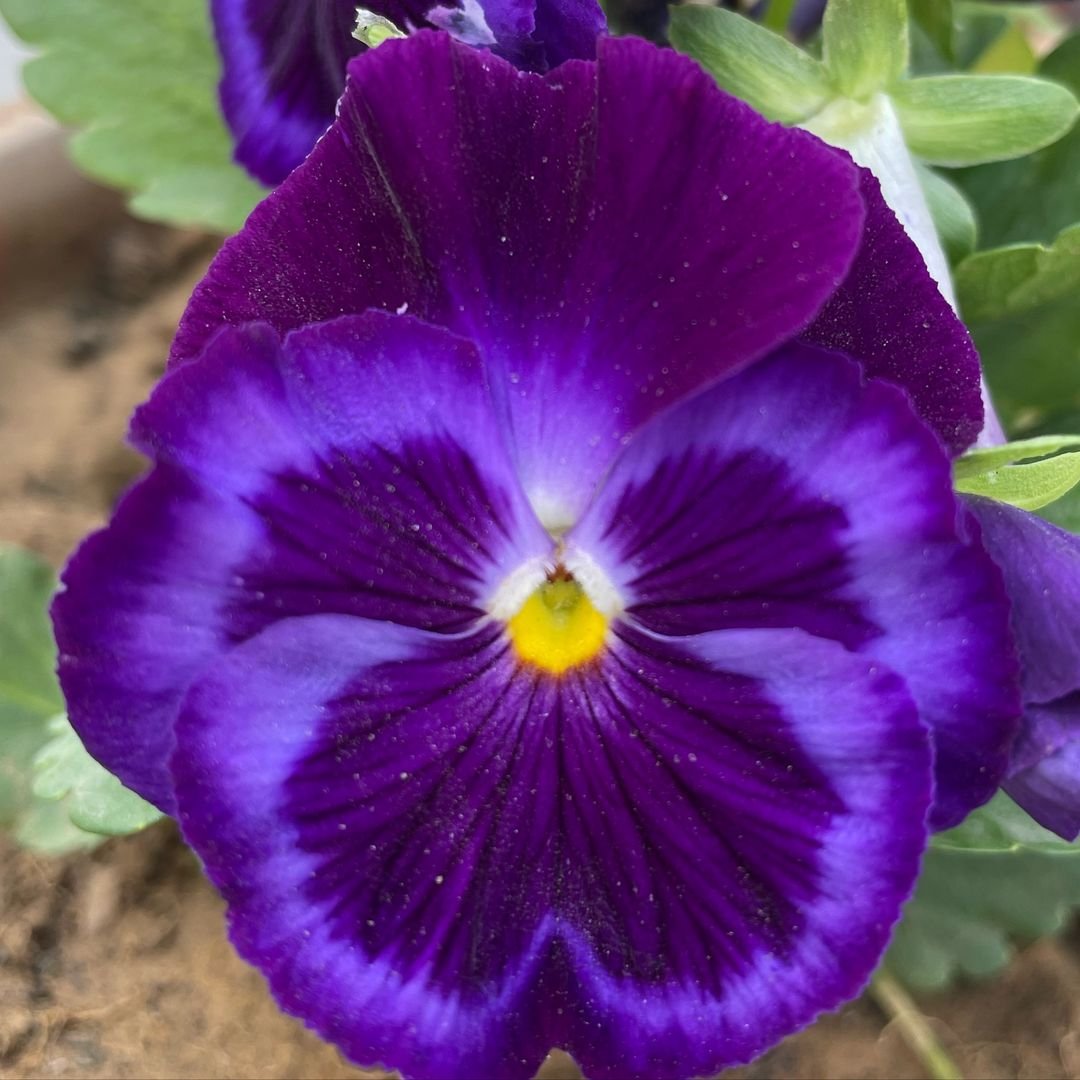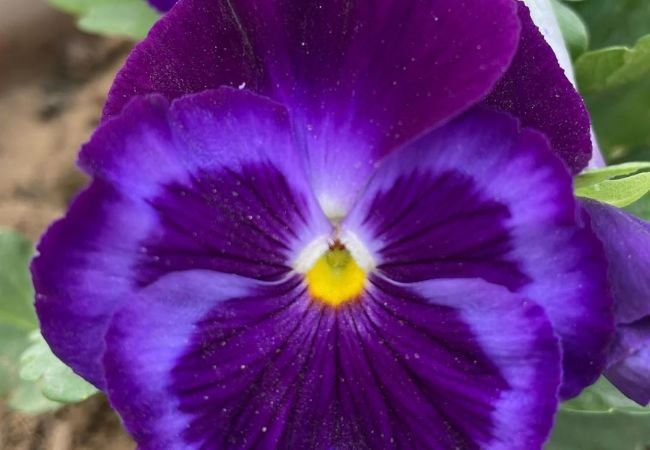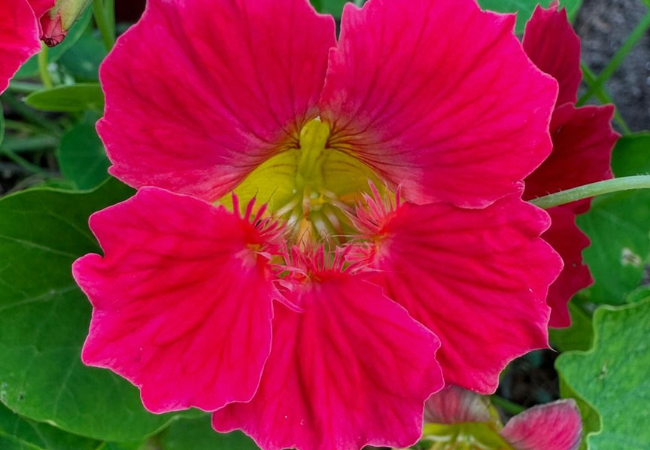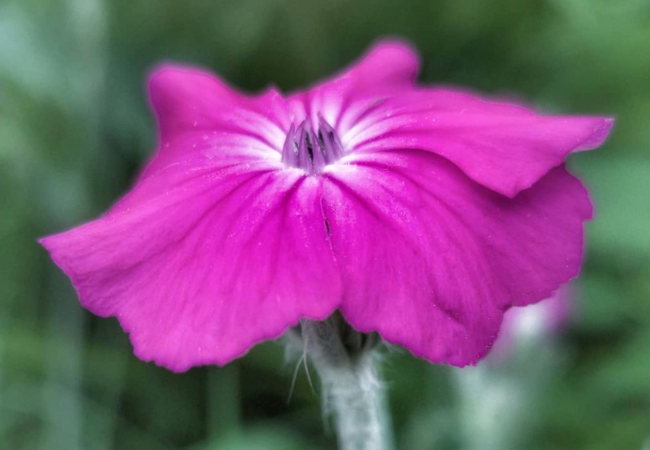Discover the charming world of Pansies – learn how to grow these colorful blooms, their care requirements and why they’re perfect for gardens and containers. A beginner-friendly guide to brighten up your outdoor space in any season.
Have you seen flowers with faces? Those might be Pansies! These cheerful flowers are loved by gardeners for their bright colors and long blooming time. Let’s explore Pansies and how you can grow them in your garden.
Here’s a detailed chart for Pansy flowers:
| Category | Information |
|---|---|
| Botanical name | Viola × wittrockiana |
| Common name | Pansy |
| Plant type | Annual or perennial |
| Hardiness zone | Zones 6-10 (often grown as annuals in cooler zones) |
| Sun exposure | Full sun to part shade |
| Soil type | Rich, well-drained |
| Watering | Regular |
| Growth habit | Compact, mounding |
| Height/Spread | 6-9 inches tall, 6-9 inches wide |
| Special features | Large, rounded flowers with “faces” in a wide range of colors including purple, yellow, orange, red, white and blue; cool-season bloomer, edible flowers |
What are Pansies?

Pansies are flowering plants that belong to the violet family. They’re known for their round, flat flowers that often look like they have faces. Pansies come in many colors and can bloom in cold weather, making them popular for fall and spring gardens.
What Do Pansies Look Like?
- Flowers: Round with five petals, often in multiple colors
- Size: Usually 6-9 inches tall
- Leaves: Small, oval-shaped and green
- Colors: Come in almost every color except true red
To learn more about flower types, visit the USDA Plants Database.
Growing Pansies in Your Garden
Want to grow Pansies?Here’s what you need:
- Sunlight: They like full sun or partial shade
- Soil: Well-draining soil is best
- Water: Keep the soil moist but not soggy
- Temperature: Pansies can handle cold weather, even light frost
For more gardening tips, check out the National Gardening Association.
Planting Pansies
You can plant Pansies in spring or fall:
- Choose a spot with good drainage
- Dig holes about 6-8 inches apart
- Place plants in the holes and fill with soil
- Water well after planting
Caring for Pansies
Pansies are pretty easy to care for:
- Water regularly, especially during dry spells
- Remove dead flowers to encourage more blooms
- Fertilize every few weeks with a balanced fertilizer
- Protect from extreme heat in summer
Uses of Pansies
Pansies have many uses in the garden:
- Flower beds: Great for adding color to garden beds
- Containers: Perfect for pots and window boxes
- Edible flowers: Pansies are edible and can be used to decorate cakes or salads
To learn about using edible flowers safely, visit the FDA’s Food Safety Information page.
Types of Pansies
There are many types of Pansies:
- Clear-faced: Solid colors without marks
- Faced: Have dark centers that look like faces
- Whiskers: Have fine lines radiating from the center
Pansies in Different Seasons
Pansies are unique because they can grow in cool weather:
- Spring: Plant early for spring color
- Fall: Plant in fall for blooms through mild winters
- Winter: In warm areas, Pansies can bloom all winter
To understand your local climate, visit the USDA Plant Hardiness Zone Map.
Pansies and Pollinators
Pansies attract bees and other pollinators to your garden. This helps other plants in your garden grow better.
Pests and Problems
Watch out for these issues:
- Slugs and snails: Can eat the leaves and flowers
- Root rot: Caused by soil that’s too wet
- Heat stress: Pansies don’t like very hot weather
If you have plant problems, you can ask for help at your local garden center or contact your state‘s Cooperative Extension office.
Pansies in Containers
Pansies grow well in pots and hanging baskets. When growing in containers:
- Use a pot with drainage holes
- Fill with good quality potting soil
- Water more often than plants in the ground
For container gardening tips, visit the USDA’s Container Gardening page.
Pansies in History and Culture
Pansies have been popular for a long time:
- In Victorian times, people used Pansies to send secret messages
- The name “Pansy” comes from the French word “pensée,” meaning “thought”
To explore more about the cultural significance of plants, visit the Smithsonian Gardens.
Pansies are wonderful flowers that can bring color to your garden in any season. They’re easy to grow, come in many colors and can even handle cold weather. Whether you’re planting them in your flower bed, growing them in pots or using them to decorate food, Pansies are sure to brighten up your day.
Remember, every garden is different. Don’t be afraid to try different types of Pansies and see what works best in your space. Happy gardening!
For more gardening tips and plant care guides, visit usagardenhub.com.







One comment on “Pansies : Colorful Flowers for Every Season”